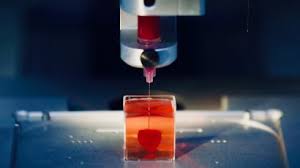
Breaking News
 How to Set Up An Email Alias - #SolutionsWatch
How to Set Up An Email Alias - #SolutionsWatch
 Theft of a Nation: How the Deep State Swamp Is Stealing the People's Power
Theft of a Nation: How the Deep State Swamp Is Stealing the People's Power
 As America Soul Searches, The Rest Of The West Is Falling Apart
As America Soul Searches, The Rest Of The West Is Falling Apart
Top Tech News
 'Robot skin' beats human reflexes, transforms grip with fabric-powered touch
'Robot skin' beats human reflexes, transforms grip with fabric-powered touch
 World's first nuclear fusion plant being built in US to power Microsoft data centers
World's first nuclear fusion plant being built in US to power Microsoft data centers
 The mitochondria are more than just the "powerhouse of the cell" – they initiate immune...
The mitochondria are more than just the "powerhouse of the cell" – they initiate immune...
 Historic Aviation Engine Advance to Unlock Hypersonic Mach 10 Planes
Historic Aviation Engine Advance to Unlock Hypersonic Mach 10 Planes
 OpenAI CEO Sam Altman Pitches Eyeball-Scanning World ID to Bankers
OpenAI CEO Sam Altman Pitches Eyeball-Scanning World ID to Bankers
 New 3D-printed titanium alloy is stronger and cheaper than ever before
New 3D-printed titanium alloy is stronger and cheaper than ever before
 What is Unitree's new $6,000 humanoid robot good for?
What is Unitree's new $6,000 humanoid robot good for?
 "No CGI, No AI, Pure Engineering": Watch Raw Footage Of 'Star Wars'-Style Speeder
"No CGI, No AI, Pure Engineering": Watch Raw Footage Of 'Star Wars'-Style Speeder
 NASA's X-59 'quiet' supersonic jet rolls out for its 1st test drive (video)
NASA's X-59 'quiet' supersonic jet rolls out for its 1st test drive (video)
 Hypersonic SABRE engine reignited in Invictus Mach 5 spaceplane
Hypersonic SABRE engine reignited in Invictus Mach 5 spaceplane
Blood vessels incorporated into 3D-printed living skin

First of all, there already are commercially-available 3D-bioprinted skin grafts, made from living cells. These are typically intended just to be temporary wound coverings, however, as they lack the vasculature that would allow life-giving blood to flow from the patient's body and into them. As a result, such grafts eventually die, sloughing off the patient's own skin.
Looking to overcome this limitation, a team at New York's Rensselaer Polytechnic Institute initially started by mixing two types of living human cells to produce so-called "bio-inks." These were printed into a skin-like structure, although it still lacked a vascular system.
More recently, in collaboration with colleagues at Yale University, they added certain "key elements" to those bio-inks. These elements included human endothelial cells – which line the inside of blood vessels – and human pericyte cells, which wrap around the endothelial cells. These were combined with ingredients that are typically found in bioprinted skin grafts, such as animal collagen and other structural cells.
Within the space of a few weeks, blood vessels began growing in skin that had been printed from the new bio-inks. When these pieces of the skin were grafted over open wounds on mice, the animals' blood vessels began communicating with those in the bioprinted skin, causing the grafts to become perfused with blood after four weeks.

 Red Alert in Reverse Repos
Red Alert in Reverse Repos

